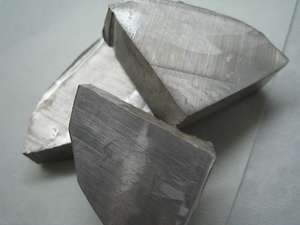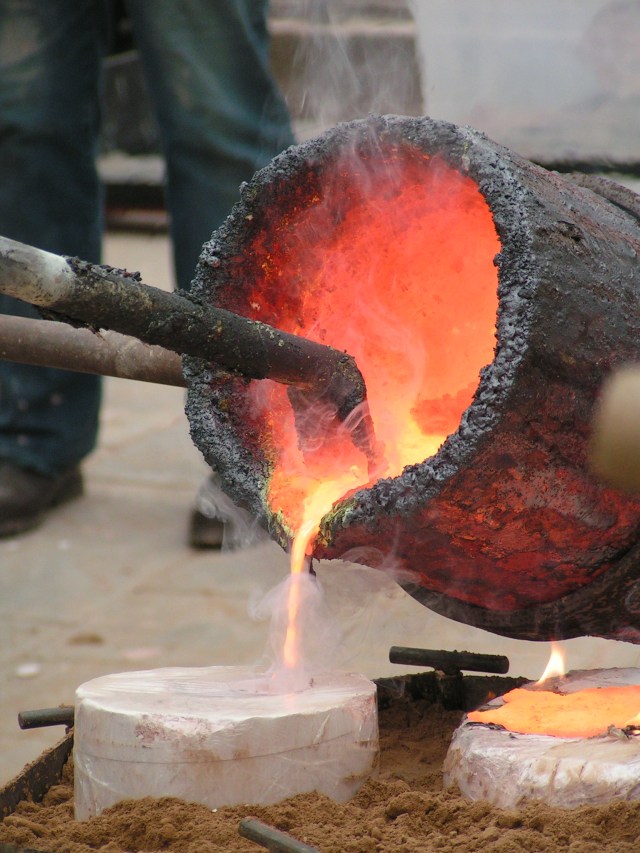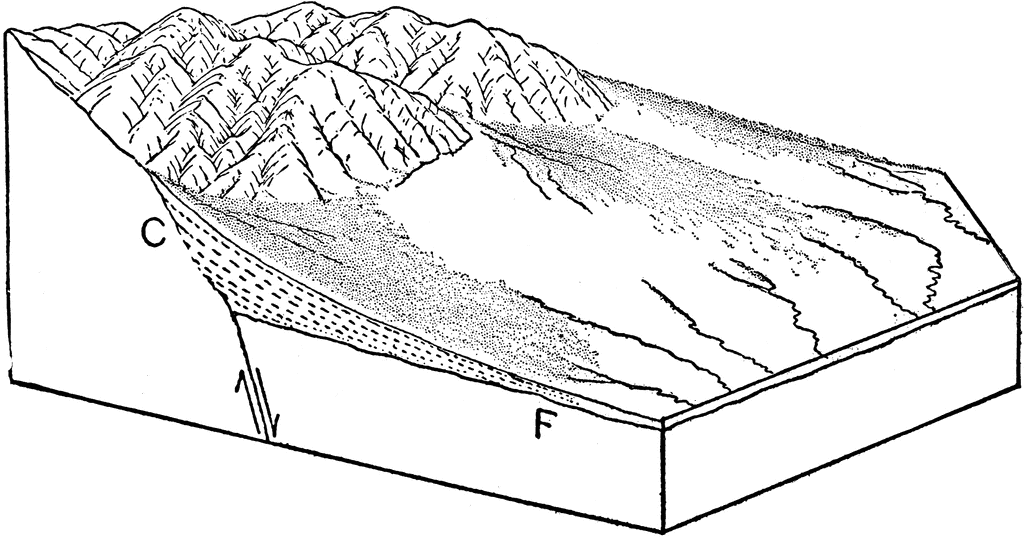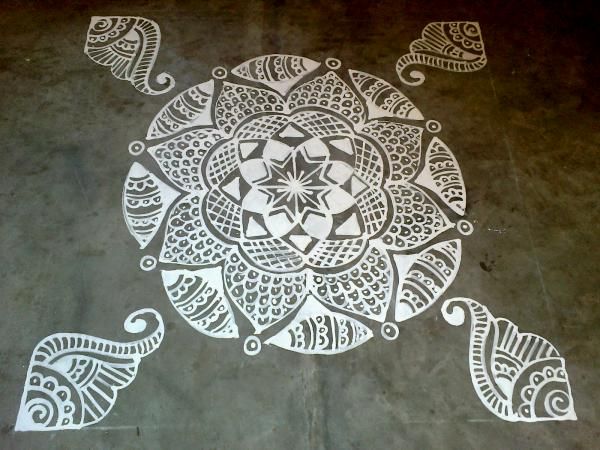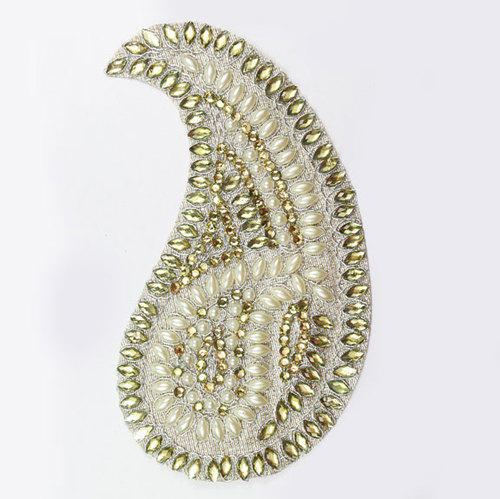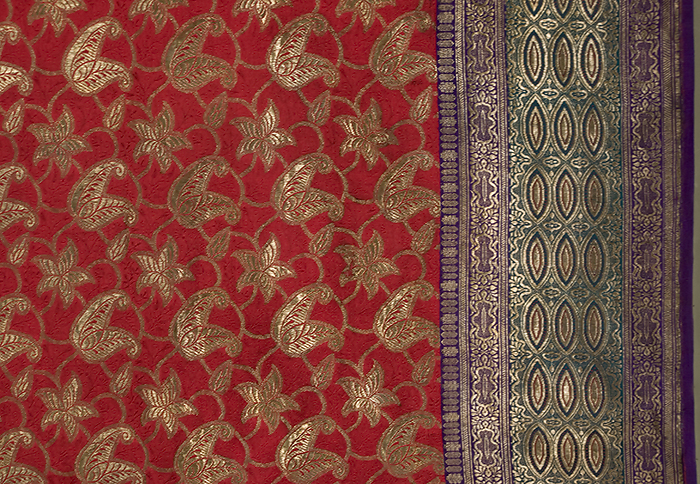Alkali,
A chemical compound, with a bitter taste, that releases hydroxyl ions in solution. The strength of the alkali depends upon the concentration of hydroxyl ions. Alkalis react with acids, forming salts, and have a pH greater than 7. Common alkalis include ammonia, sodium and potassium hydroxides, and carbonates.
A chemical compound, with a bitter taste, that releases hydroxyl ions in solution. The strength of the alkali depends upon the concentration of hydroxyl ions. Alkalis react with acids, forming salts, and have a pH greater than 7. Common alkalis include ammonia, sodium and potassium hydroxides, and carbonates.
Allowance,
In engraved roller printing, a small space between areas of colour, so carefully calculated as to be just closed on printing - to avoid bleeding. Alternatively, in screen printing, often a small overlap planned so as to avoid possible gaps of white cloth if registration of screens is not accurately accomplished.
In engraved roller printing, a small space between areas of colour, so carefully calculated as to be just closed on printing - to avoid bleeding. Alternatively, in screen printing, often a small overlap planned so as to avoid possible gaps of white cloth if registration of screens is not accurately accomplished.
Alloy,
A metallic mixture two or more elements. An alloy can be formed from a mixture of two of more metals e.g. copper and tin to form bronze, or by a mixture of a metallic and non-metallic element e.g. iron and carbon to form steel, or cast iron. It has been suggested that the term alloy should only be used when there is a suggestion that the mixing was deliberate. In the study of ancient metallurgy it is difficult to prove deliberate mixing in some cases, e.g. when the ‘alloy’ could have arisen by co-smelting e.g. Cu-As and Fe-C-P alloys. So, an alternative use of the term would be - any metallic mixture of elements whose physical, mechanical, or metallurgical properties differed substantially from the constituent elements.
A metallic mixture two or more elements. An alloy can be formed from a mixture of two of more metals e.g. copper and tin to form bronze, or by a mixture of a metallic and non-metallic element e.g. iron and carbon to form steel, or cast iron. It has been suggested that the term alloy should only be used when there is a suggestion that the mixing was deliberate. In the study of ancient metallurgy it is difficult to prove deliberate mixing in some cases, e.g. when the ‘alloy’ could have arisen by co-smelting e.g. Cu-As and Fe-C-P alloys. So, an alternative use of the term would be - any metallic mixture of elements whose physical, mechanical, or metallurgical properties differed substantially from the constituent elements.
Alluvial Deposit,
The local concentration of minerals in old river and stream deposits (Alluvium). These form when minerals weathered and transported from the original solid geology deposits are locally concentrated in the bed of steam. These stream deposit may be buried to some considerable depth below subsequent Quaternary gravels. Tin and gold in particular are concentrated in such deposits. Much of the medieval and earlier tin mined in Devon and Cornwall came from stream works working this type of deposit. Related terms: Eluvial, Colluvial
The local concentration of minerals in old river and stream deposits (Alluvium). These form when minerals weathered and transported from the original solid geology deposits are locally concentrated in the bed of steam. These stream deposit may be buried to some considerable depth below subsequent Quaternary gravels. Tin and gold in particular are concentrated in such deposits. Much of the medieval and earlier tin mined in Devon and Cornwall came from stream works working this type of deposit. Related terms: Eluvial, Colluvial
Alpana,
Traditional symbolic floor drawings painted with colours made from ground rice paste, turmeric, and vermilion. The designs are ritualistic, symbols of auspiciousness and signify worship or invocation of various deities through codified abstract design. Variations of these floor paintings exist all over India.
Traditional symbolic floor drawings painted with colours made from ground rice paste, turmeric, and vermilion. The designs are ritualistic, symbols of auspiciousness and signify worship or invocation of various deities through codified abstract design. Variations of these floor paintings exist all over India.
Alpna,
Auspicious symbols or diagrams outlined on the floor by women in the western Himalayas. See also Alpona; Aripona
Auspicious symbols or diagrams outlined on the floor by women in the western Himalayas. See also Alpona; Aripona
Alpona,
Auspicious symbols or diagrams outlined on the floor by the women of Bengal. See also Alpana; Aripona
Auspicious symbols or diagrams outlined on the floor by the women of Bengal. See also Alpana; Aripona
Alum,
Alum is a mordant or color fixative. Available in three crystalline salts it is dissolved in water and applied to paper prior to marking.
Alum is a mordant or color fixative. Available in three crystalline salts it is dissolved in water and applied to paper prior to marking.
Amalgam,
A compound or mixture of mercury with other metals. Mercury may form an amalgam with gold, silver, tin, zinc, lead, copper, and other metals. The micro structure of these amalgams may be complex.
A compound or mixture of mercury with other metals. Mercury may form an amalgam with gold, silver, tin, zinc, lead, copper, and other metals. The micro structure of these amalgams may be complex.
Ambari Hathi,
Ceremonial elephant in Andhra Pradesh with a seat and canopy on its back for the rider.
Ceremonial elephant in Andhra Pradesh with a seat and canopy on its back for the rider.
Analysis Chemical,
Chemical analysis is an important aspect of archaeometallurgy. These techniques can identify the metals and alloys used to produce the artifact or debris under study, be used determine the number of structure components used to construct complex artifacts, be used to test whether a group of material is com-positional similar, be used to establish metal trade routes, and in a few cases the provenance of the metal. A large number of different techniques are available to the archaeometallurgical, each with its own advantages and draw-backs.
Chemical analysis is an important aspect of archaeometallurgy. These techniques can identify the metals and alloys used to produce the artifact or debris under study, be used determine the number of structure components used to construct complex artifacts, be used to test whether a group of material is com-positional similar, be used to establish metal trade routes, and in a few cases the provenance of the metal. A large number of different techniques are available to the archaeometallurgical, each with its own advantages and draw-backs.
| Analysis Technique | Acronym used |
| Atomic Absorption Analysis | AAA (AAS) |
| Metallographic | None |
| Electron Probe MicroAnalysis | EPMA |
| Energy Dispersive X-ray Spectroscopy | EDS, EDX |
| Induction Coupled Plasma Mass Spectroscopy | ICP-MS |
| Induction Coupled Plasma Optical Emission Spectroscopy | ICPS-OES |
| Proton Induced X-ray Emission | PIXE |
| X-Ray Diffraction | XRD |
| X-Ray Fluorescence | XRF |
